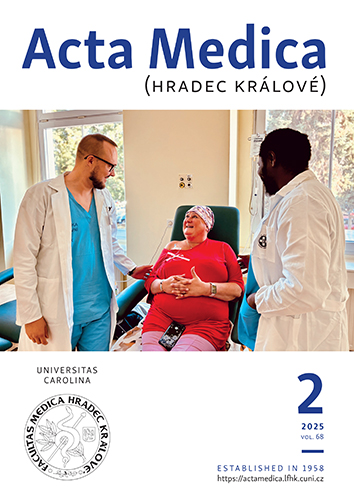ACTA MEDICA, Vol 56 No 2 (2013), 47–51
Secular Trends and Latitude Gradients in the Male-Female Ratio at Birth in Yugoslavia and the ex-Yugoslavian States
Victor Grech
DOI: https://doi.org/10.14712/18059694.2014.23
zveřejněno: 23. 07. 2015
Abstract
Background: Latitude gradients and secular trends in Europe and North America have been found in the male-female ratio at birth (M/F: male births divided by total births) which approximates 0.515. Methods: Annual national data for Yugoslavia and the post-Yugoslavia States for male and female live births were obtained from the World Health Organisation and analysed with contingency tables. Results: This study analysed 22,020,729 live births. There was a increasing trend in M/F prior to the breakup of the former Yugoslavia (1950–1990, p = 0.002), followed by a decreasing trend after 1990 (p = 0.02). A latitude gradient was also noted, with more males being born in southern, warmer latitudes (p < 0.0001). There was an overall excess of 42,753 male births based on an anticipated M/F of 0.515. Conclusion: M/F is decreasing in this region, similar to the rest of Europe and North America. A latitude gradient is also present with more males being born in warmer (more Southern) latitudes (p < 0.0001), even in this small region and over the short timeframe studied.
klíčová slova: Asia; Southeastern; Far East; Birth Rate/*trends; Infant; Newborn; Sex Ratio

Secular Trends and Latitude Gradients in the Male-Female Ratio at Birth in Yugoslavia and the ex-Yugoslavian States is licensed under a Creative Commons Attribution 4.0 International License.
210 x 297 mm
vychází: 4 x ročně
cena tištěného čísla: 150 Kč
ISSN: 1211-4286
E-ISSN: 1805-9694
